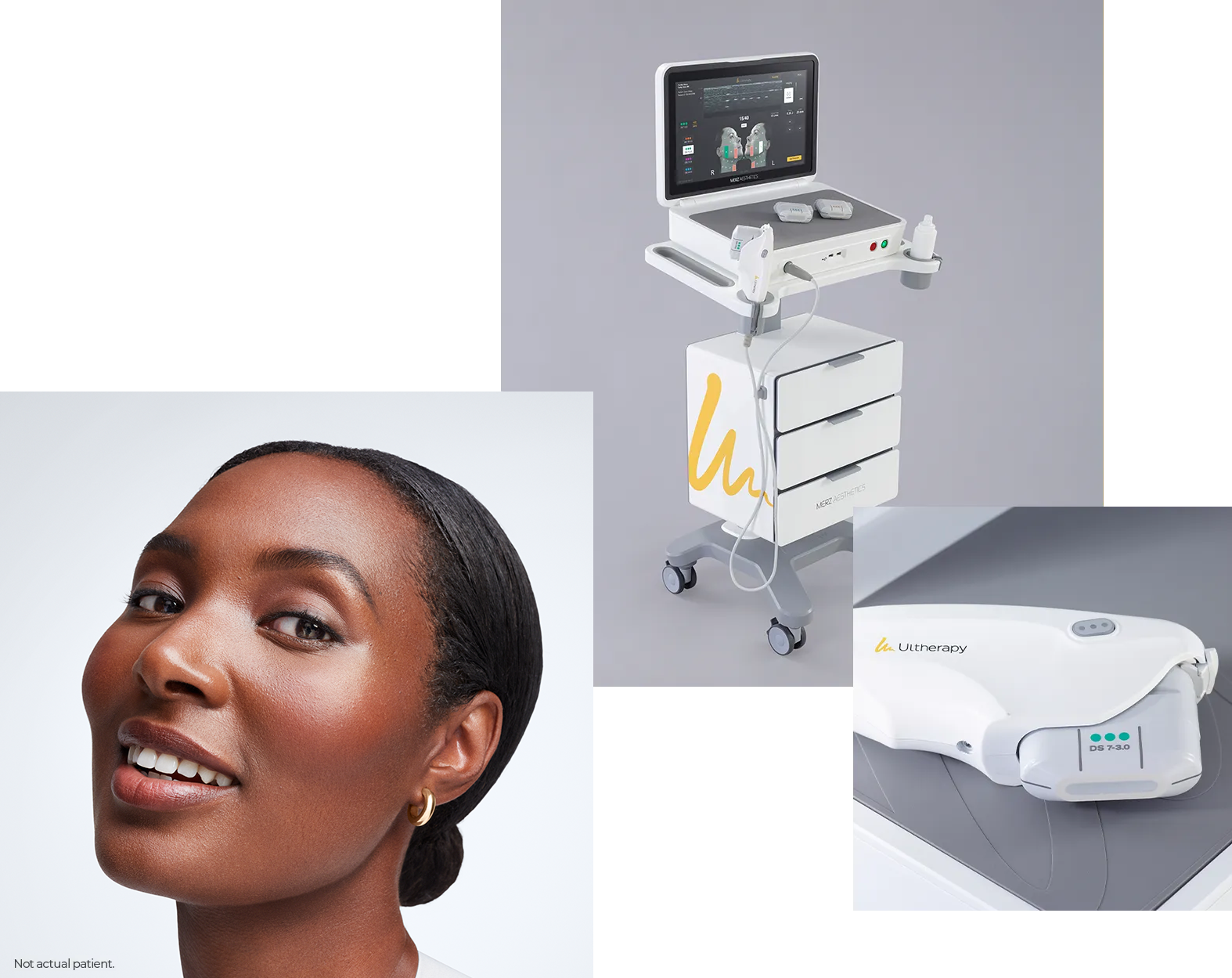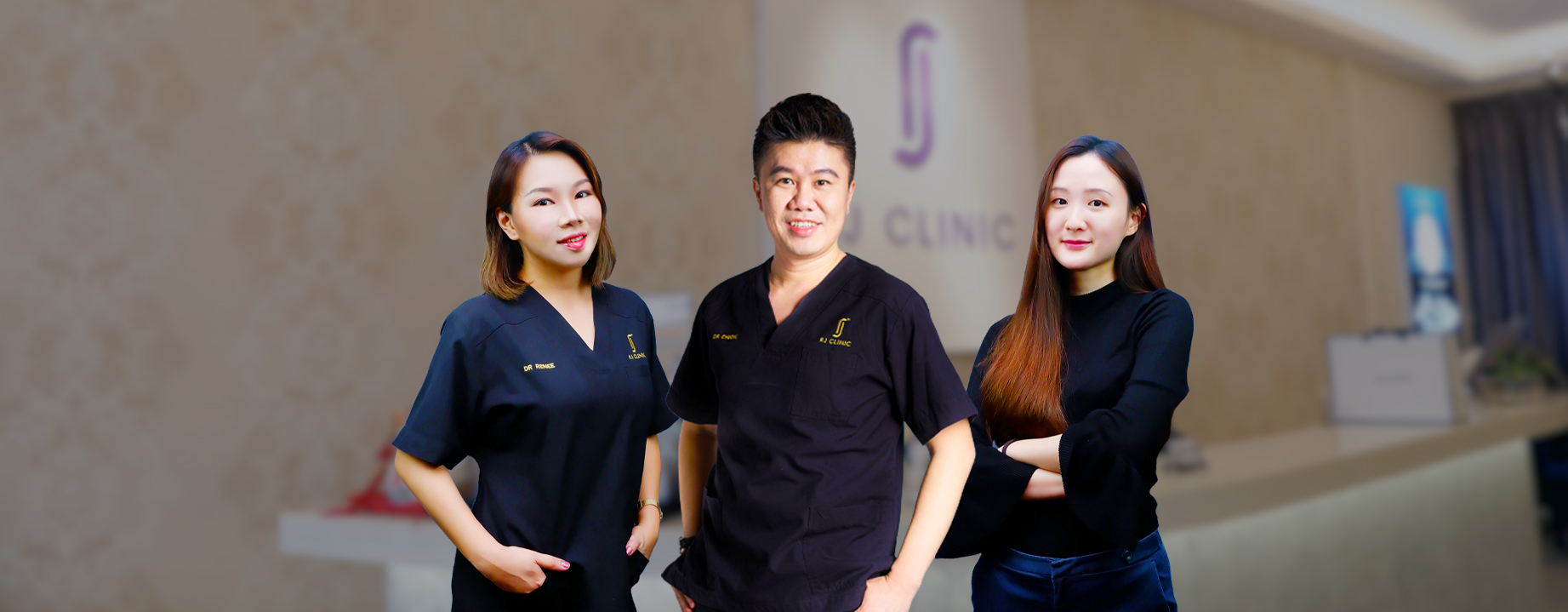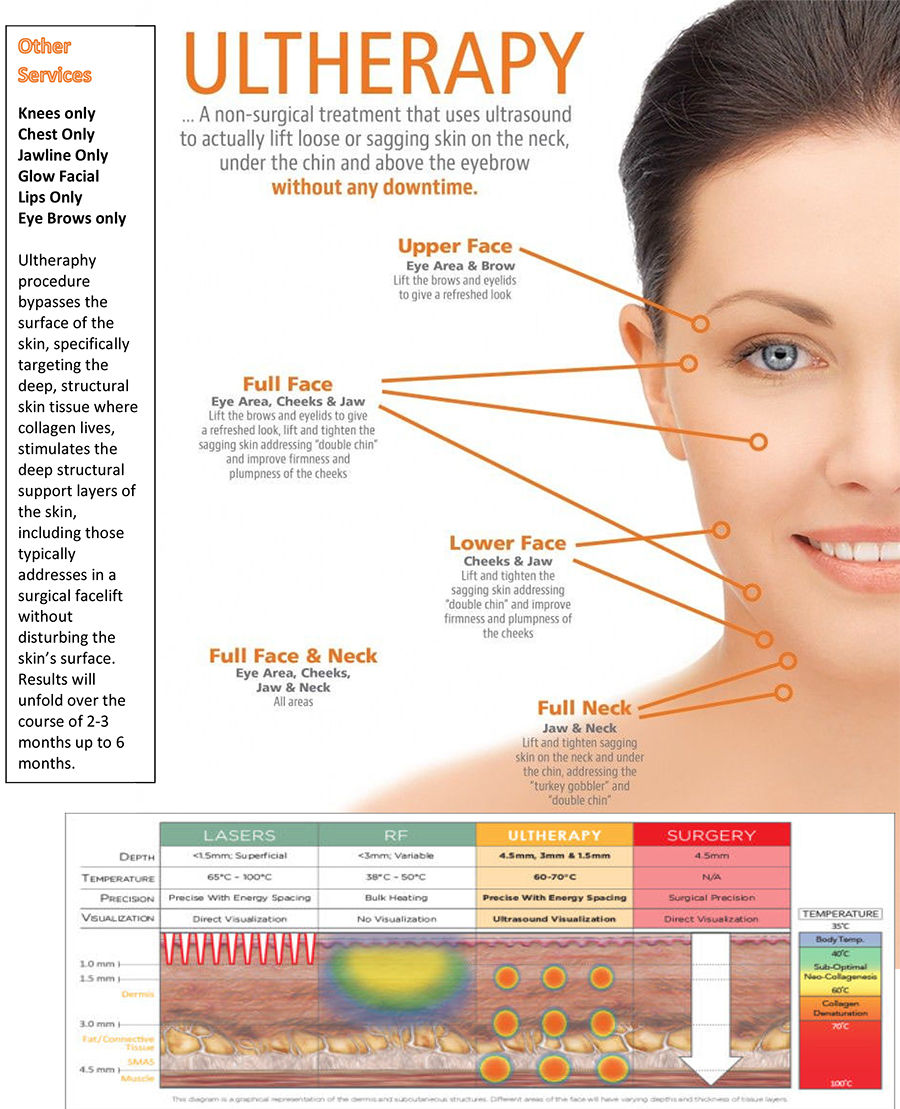Top Benefits to Consider Skin tightening treatment KL for Youthful Results
Why Ultherapy Could Be Medically Required: Exploring the Factors for a Non Surgical Lift
Ultherapy is getting attention as a viable alternative for individuals facing skin laxity as a result of aging or specific medical conditions. This non-surgical therapy promotes collagen production, using a solution that prevents the recovery time linked with invasive treatments. As people look for to improve not just their appearance yet likewise their total skin health and wellness, understanding the conditions that call for Ultherapy's use comes to be necessary. What elements add to its medical requirement?
Understanding Ultherapy: What It Is and Exactly how It Functions
Ultherapy, a non-invasive cosmetic procedure, makes use of ultrasound innovation to stimulate collagen manufacturing and advertise skin tightening up. By supplying focused ultrasound power deep right into the skin, it targets the foundational layers commonly dealt with in medical facelifts. This procedure encourages the body's natural recovery response, leading to steady lifting and tightening up of the skin with time.

Therapy sessions usually last in between 30 to 90 minutes, relying on the size of the location being treated. While outcomes may not be quickly visible, ideal impacts generally appear within a couple of months as collagen remains to develop. Ultherapy offers an engaging non-surgical option for people seeking skin renewal without the demand for intrusive procedures.
The Aging Refine: Results on Skin Elasticity and Collagen
Aging certainly brings modifications that lessen skin elasticity and collagen production, bring about visible indications of drooping and creases. As individuals age, the skin's capability to maintain moisture decreases, leading to a drier and much less resilient surface. Collagen, a vital healthy protein responsible for skin structure, likewise lessens, causing the skin to lose its suppleness and vibrant look. Factors such as sun direct exposure, ecological pollutants, and lifestyle choices additionally increase this decrease in skin top quality.
This loss of flexibility and collagen creates a cascade of changes, including the development of dewlaps, strengthening nasolabial folds up, and an overall drooping look. The skin's assistance system weakens, making it much more vulnerable to the impacts of gravity. As a result, several people look for treatments like Ultherapy to deal with these aging results, intending to bring back a much more younger, tight appearance without the requirement for invasive surgical treatments.
Clinical Problems That May Advantage From Ultherapy
Ultherapy is progressively acknowledged for its potential advantages in dealing with numerous clinical conditions. People experiencing skin laxity, those in post-surgical healing, and patients with persistent skin disease might discover this non-invasive treatment helpful. By stimulating collagen production, Ultherapy can enhance skin suppleness and enhance total appearance for these groups.
Skin Laxity Problems
Skin laxity can be a significant problem for individuals experiencing numerous medical problems that affect the honesty and elasticity of their skin. Problems such as Ehlers-Danlos syndrome, which interferes with collagen manufacturing, can cause early skin aging and sagging. In addition, individuals with autoimmune conditions might experience skin changes that add to laxity. Hormone fluctuations, especially throughout menopause, likewise play a duty in diminishing skin suppleness. Ultherapy, making use of ultrasound technology, targets the deeper layers of skin, boosting collagen production and tightening the impacted locations. This non-invasive therapy may provide a sensible solution for those seeking to attend to skin laxity arising from these medical conditions, improving both look and self-worth without the need for surgical intervention.
Post-Surgical Recovery Aid
Post-surgical healing can often existing obstacles, especially for individuals experiencing skin laxity as a result of medical treatments. Ultherapy functions as a prospective help in this scenario, utilizing ultrasound technology to stimulate collagen find out here now production and enhance skin tightness without invasive procedures. Individuals who have undergone surgical treatments such as renovations, lipo, or various other body contouring procedures may discover that Ultherapy improves their read this article healing by attending to irregular texture and laxity that can occur post-operation. This non-surgical approach can lead to improved visual end results, possibly lowering the demand for added medical interventions. It may assist alleviate pain connected with the healing process, offering people an extra all-inclusive recovery experience. As a result, Ultherapy can be a valuable alternative in post-surgical treatment.
Persistent Skin Problems
For individuals dealing with persistent skin problem such as acne marks, rosacea, or laxity because of aging, non-invasive therapies might supply substantial relief and improvement. Ultherapy has actually emerged as an encouraging choice, utilizing ultrasound modern technology to stimulate collagen manufacturing deep within the skin. This process can improve skin structure and flexibility, attending to issues like irregular skin tone and drooping. Particularly, those with rosacea may experience decreased soreness and inflammation, while people with acne marks can benefit from boosted skin smoothness and general appearance. Significantly, Ultherapy gives a non-surgical option that decreases healing time and threats related to intrusive procedures, making it an enticing choice for individuals looking for reliable administration of persistent skin problems.
Mental Influence of Sagging Skin and Aesthetic Worries
The psychological toll of aging usually materializes in the form of drooping skin, which can considerably influence an individual's self-confidence and total psychological wellness. Lots of individuals associate younger looks with power and attractiveness, resulting in sensations of insufficiency when confronted with visible indications of aging. This regarded decrease in elegance can result in social stress and anxiety, withdrawal from social interactions, and a boosted obsession with one's look.
Individuals may feel obliged to look for visual therapies to battle these problems, as the desire to maintain a youthful appearance can become linked with personal identity. The mental impacts of sagging skin may likewise cause anxiety or a reduced lifestyle. Non-surgical alternatives like Ultherapy arise as prospective services, aiming not only to renew the skin yet likewise to bring back confidence and a favorable self-image, inevitably resolving the much deeper emotional ramifications of aging.
Contrasting Ultherapy to Standard Surgical Options
When comparing Ultherapy to traditional medical choices, considerable differences arise in both cost-effectiveness and healing time. Ultherapy offers a non-invasive approach that usually leads to lower expenditures see this here and very little downtime for clients. In comparison, medical lifts generally call for even more monetary investment and an extended recuperation period.
Cost-Effectiveness of Ultherapy

Conventional medical lifts frequently come with substantial upfront expenses and extended healing times, Ultherapy offers a compelling option that can deliver similar outcomes at a fraction of the rate. The average expense of a medical facelift can range from $7,000 to $15,000, while Ultherapy therapies typically fall in between $2,000 and $4,500, relying on the area treated and provider know-how. In addition, the lack of substantial pre-operative assessments and post-operative care related to Ultherapy additionally adds to its cost-effectiveness. This approach not only reduces monetary pressure yet also allows clients to buy various other facets of their wellness and well-being. In this way, Ultherapy emerges as an economically feasible alternative for those looking for face restoration without the worries of traditional surgical procedure.
Recuperation Time Contrast
Recuperation time is a significant factor in the decision-making process for those considering cosmetic procedures. Ultherapy stands out as a non-surgical option that generally requires minimal downtime. Most clients can return to their daily tasks virtually quickly, experiencing just light inflammation or swelling that typically fixes within a few hours. On the other hand, traditional medical alternatives, such as renovations, typically require a lengthy recuperation duration. Individuals may face numerous weeks of swelling, wounding, and restricted activity, with some going back to regular routines taking up to 3 months. This plain difference in recovery time makes Ultherapy an enticing option for individuals looking for efficient results without the considerable aftercare connected with surgical treatment, allowing for a smoother change back to daily life.
The Long-Term Benefits of Non-Invasive Treatments for Skin Wellness
As individuals significantly seek choices to surgeries, the long-lasting benefits of non-invasive therapies for skin health come to be much more apparent. Therapies such as Ultherapy, chemical peels, and laser therapy offer substantial advantages without the demand for comprehensive recuperation times connected with surgery. Density RF Malaysia. Gradually, these non-invasive options can advertise collagen manufacturing, resulting in stronger skin and a more vibrant appearance
Furthermore, normal non-invasive treatments can boost skin texture, tone, and elasticity, enhancing general skin wellness. Patients usually experience fewer issues and negative effects, making these procedures a lot more enticing.
The collective results of consistent treatments can maintain and extend visual renovations, permitting individuals to preserve their preferred appearance with very little downtime. By focusing on non-invasive approaches, people can attain lasting results while prioritizing their health and wellness and wellness. Eventually, the long-lasting advantages of such approaches underscore their growing popularity in modern skincare.
Frequently Asked Inquiries

For how long Does an Ultherapy Session Normally Take?
An Ultherapy session usually lasts in between 30 to 90 mins, relying on the therapy location. Variables such as the person's details needs and the extent of the procedure can affect the general duration.

Are There Any Type Of Adverse Effects Connected With Ultherapy?
Ultherapy can cause adverse effects such as short-term soreness, swelling, or inflammation in the cured area - Density RF Malaysia. While most people experience minimal pain, it is essential to consult a specialist for individualized advice and prospective reactions
Exactly How Soon Can I See Results After Therapy?
Arise from Ultherapy commonly begin to show up within 2 to 3 months post-treatment. The complete impacts might continue to establish over 6 months as collagen production rises, leading to obvious lifting and tightening up of the skin.
Is Ultherapy Suitable for All Skin Kinds?
Ultherapy is generally appropriate for numerous skin types, including lighter and darker tones. Specific skin conditions and issues might influence its effectiveness, making examinations with a certified specialist important for tailored suggestions.
Just How Usually Should Ultherapy Treatments Be Repeated?
Ultherapy treatments are usually suggested every 6 to one year, relying on individual skin condition and desired results. Routine evaluations by a certified professional can aid establish the best frequency for maintenance and effectiveness.